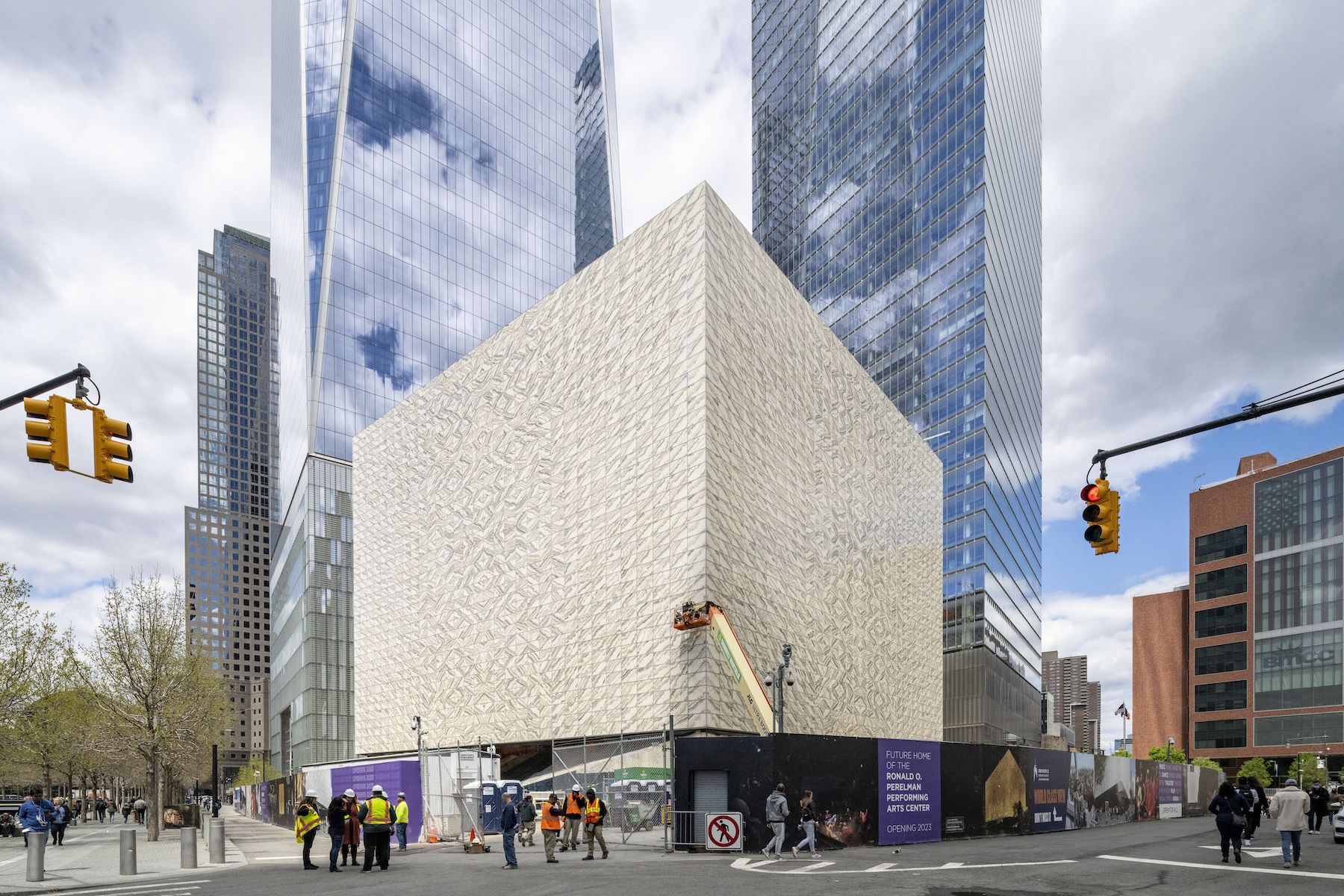The final public element for the rebuilding of the World Trade Center complex in New York City is a performing arts center that’s expected to open next September. That month will also mark the one-year anniversary of the opening of an adaptive reuse which converted what once was a greenhouse in Tarrytown, N.Y., into a flexible, 8,000-sf performance and rehearsal space, artists’ gallery and studio.
The architecture firm REX, working in collaboration with executive architect Davis Brody Bond, theater consultant Charcoalblue, and Threshold Acoustics, designed the eight-story, 138-foot-tall Perelman Performing Arts Center, located in lower Manhattan. The 129,000-sf cube-shaped PAC will provide new spaces for theater, dance, music, chamber opera, film, and media events.
Its three theaters—the John A. Zuccotti Theater, that can accommodate 450 seats; the Mike Nichols Theater, with a 250-seat capacity; and the Doris Duke Theater, which can have up to 99 seats—can be adjusted or combined into 10 different configurations.
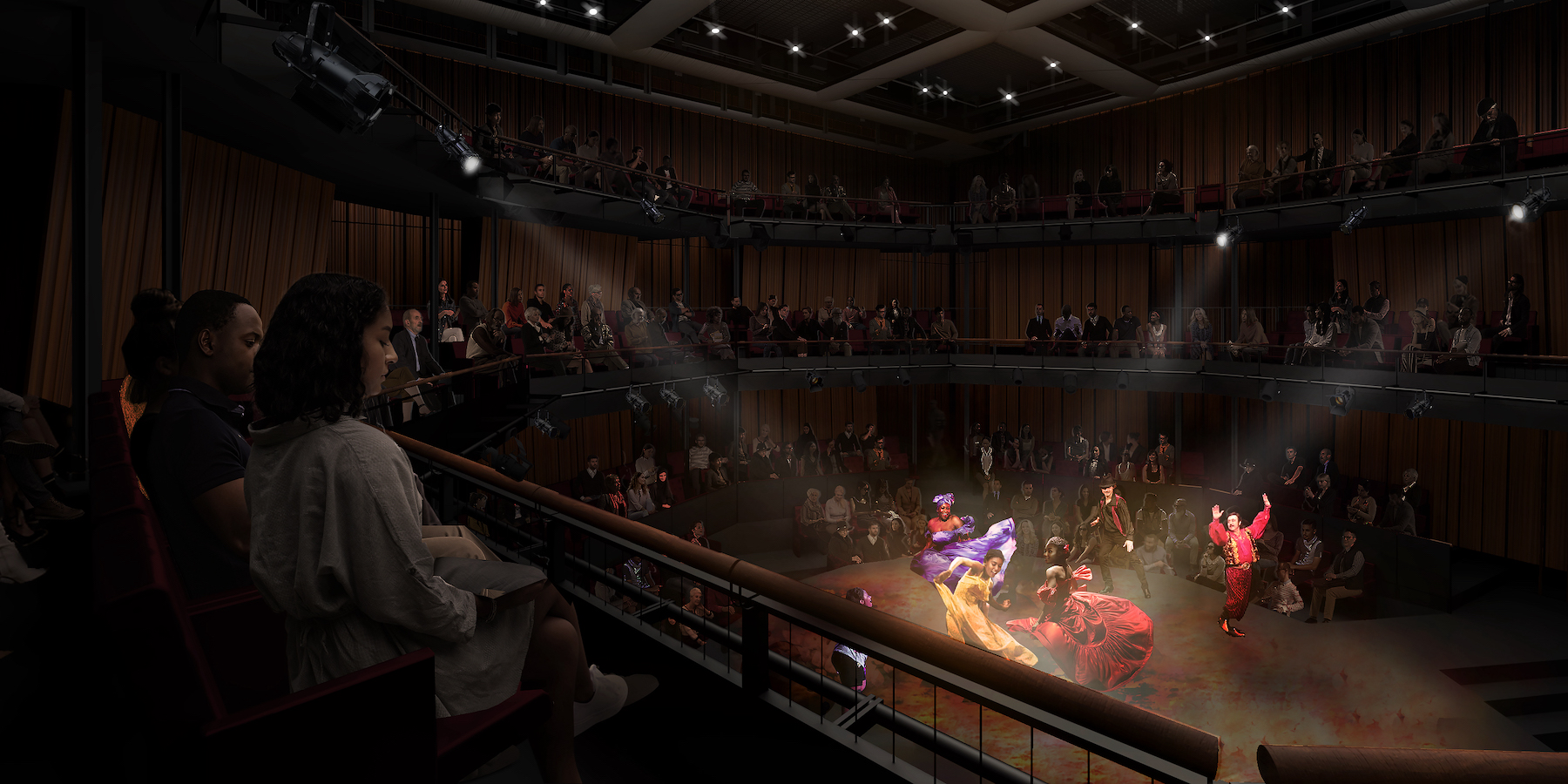
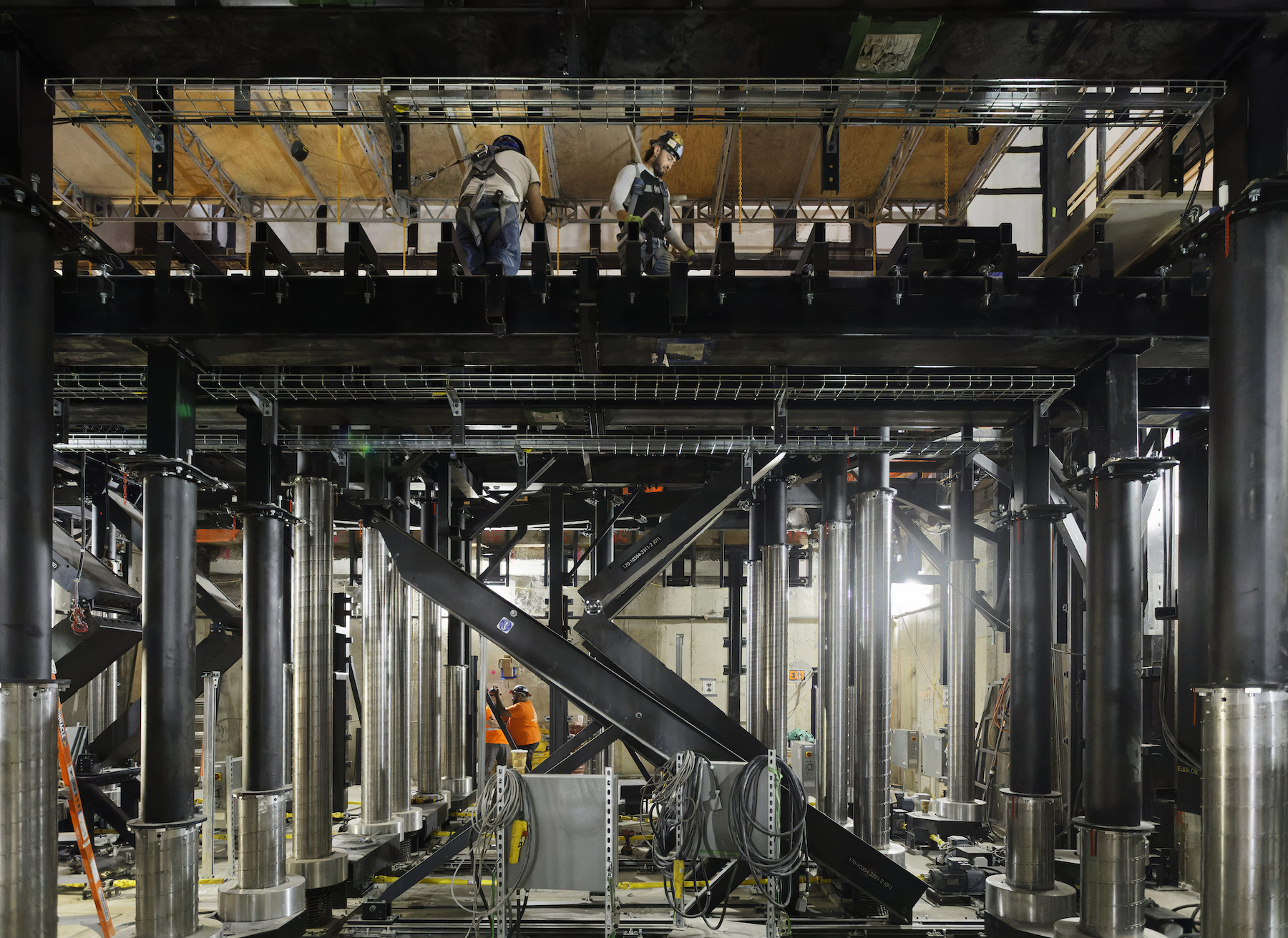
The PAC will be adjacent to the World Trade Center Oculus and Transportation Hub. Because it is being built over an existing subway and rail complex, the project’s structural engineer Magnusson Klemencic Associates devised a system that would support that building’s mass, consisting of seven mega columns through the existing infrastructure that hold aloft a belt-truss structure within which the PAC’s auditoria “float.”
The building’s exterior is wrapped with nearly 5,000 5x3-ft marble panels from Portugal, each weighing 295 lbs. (Front is the façade consultant.) Inside, the PAC is organized into three levels: a public level accessible by grand staircase or elevator that encompasses the lobby concourse and stage; an “artists” level with dressing rooms, green rooms, and wardrobe areas; and a “play” level for the three theaters and rehearsal space.
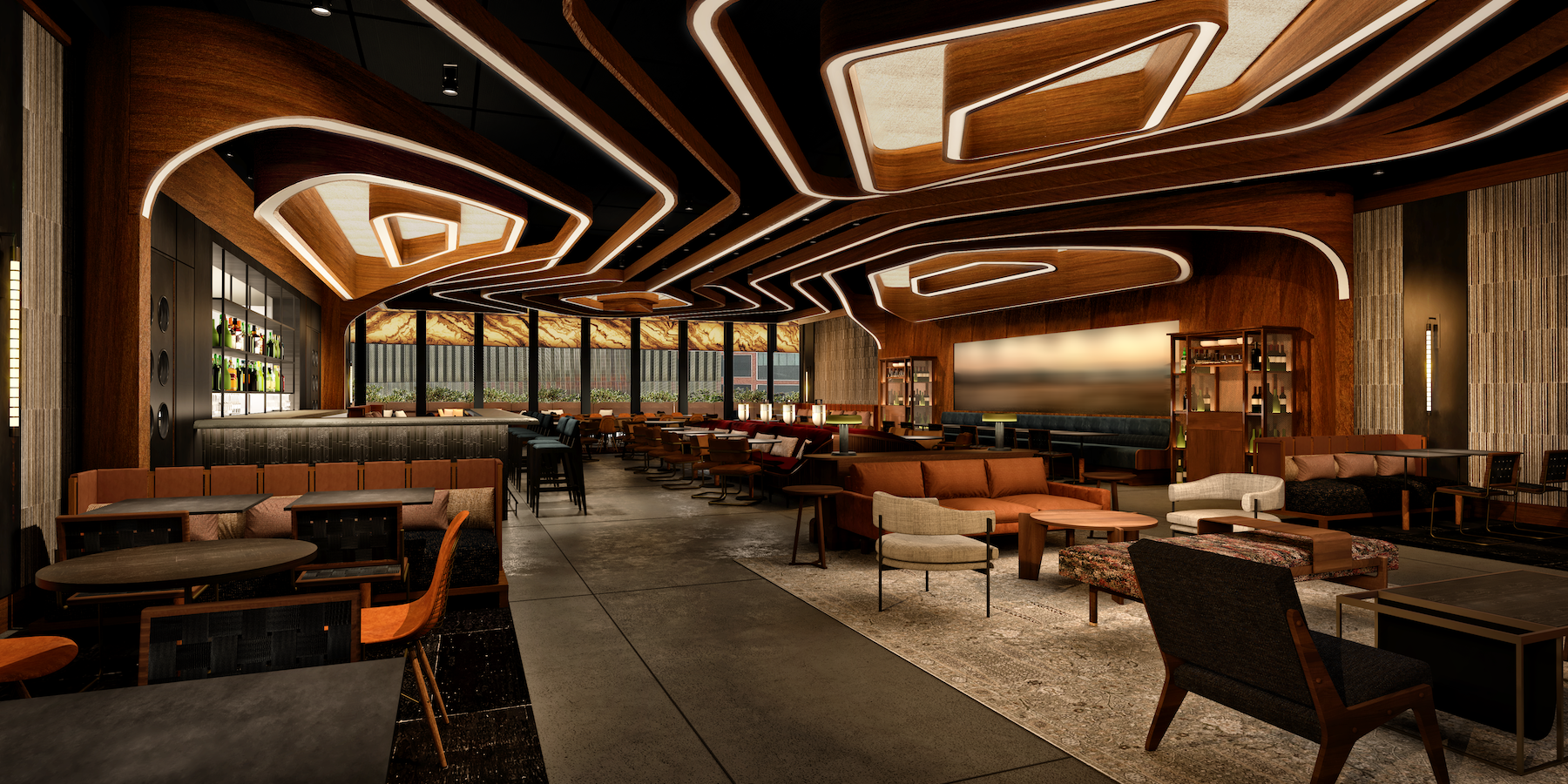
Rockwell Group designed the building’s lobby and restaurant concept restaurant. The project’s estimated cost is $500 million. Its building team includes Sciame (CM), ARUP (circulation consultant), Atelier Ten (sustainability consultant), and Wilson Ihrig (noise and vibration consultant)
From greenhouse to green performing arts center
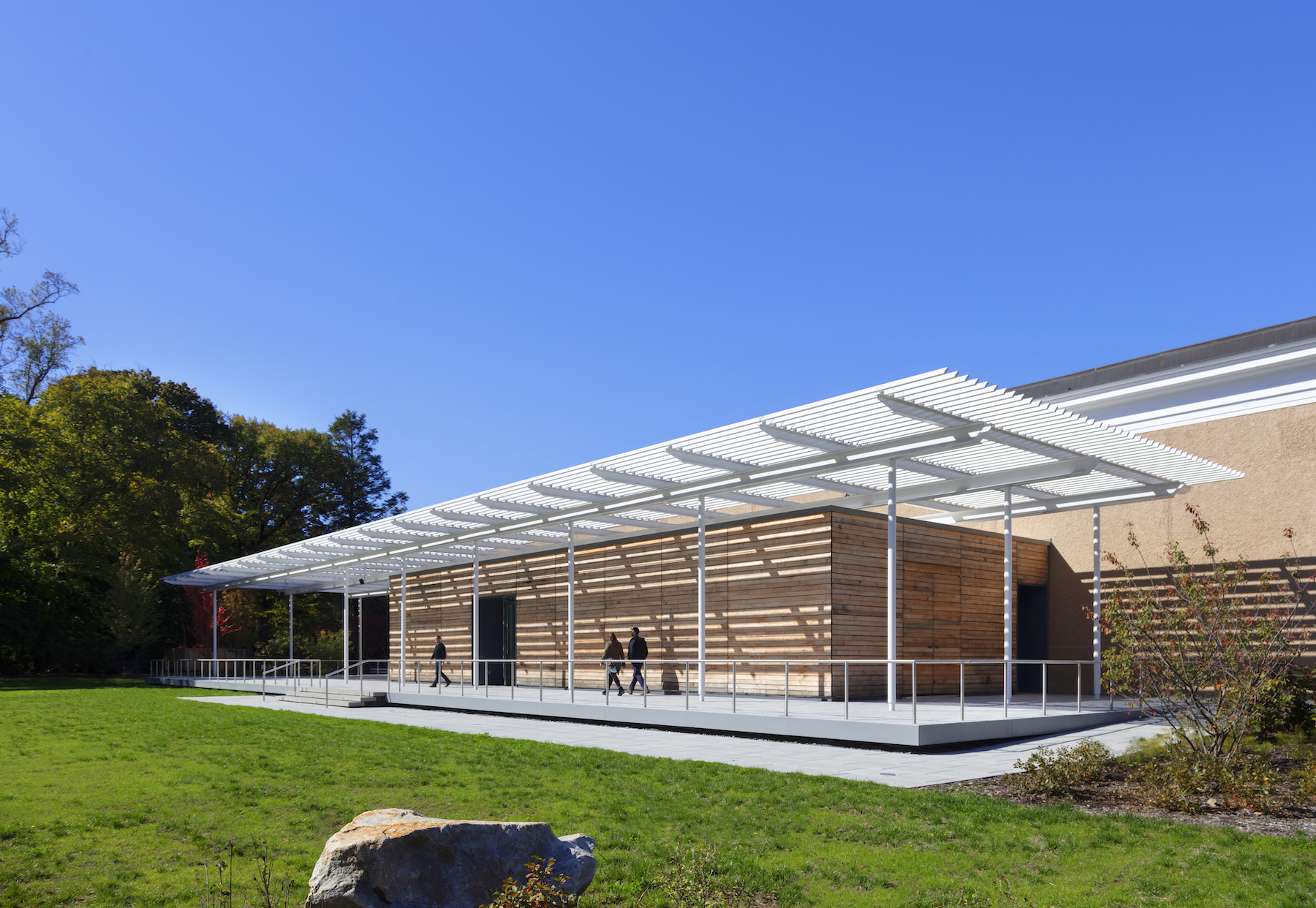
Pocantico Center, the 216-acre former Rockefeller family estate in Tarrytown, housed John D. Rockefeller’s historic Orangerie, an orange tree greenhouse with 26-ft-high ceilings, that was opened in 1906.
The Orangerie had long been dormant when the Rockefeller Brothers Fund hired the architecture firm FXCollaborative to rehabilitate the building into a multidisciplinary arts center that would also be a model for sustainable design, and inclusion.
This adaptive reuse, now called the David Rockefeller Creative Arts Center, “is rooted in supporting the creative process across artistic disciplines,” said Brandon Massey, AIA, LEED GA, Senior Associate at FXCollaborative, in a prepared statement. This renovation, at a cost of $26 million, was completed within the guidelines of the National Trust for Historic Preservation. (Li Salzman Architects was the project’s historic preservation consultant.)
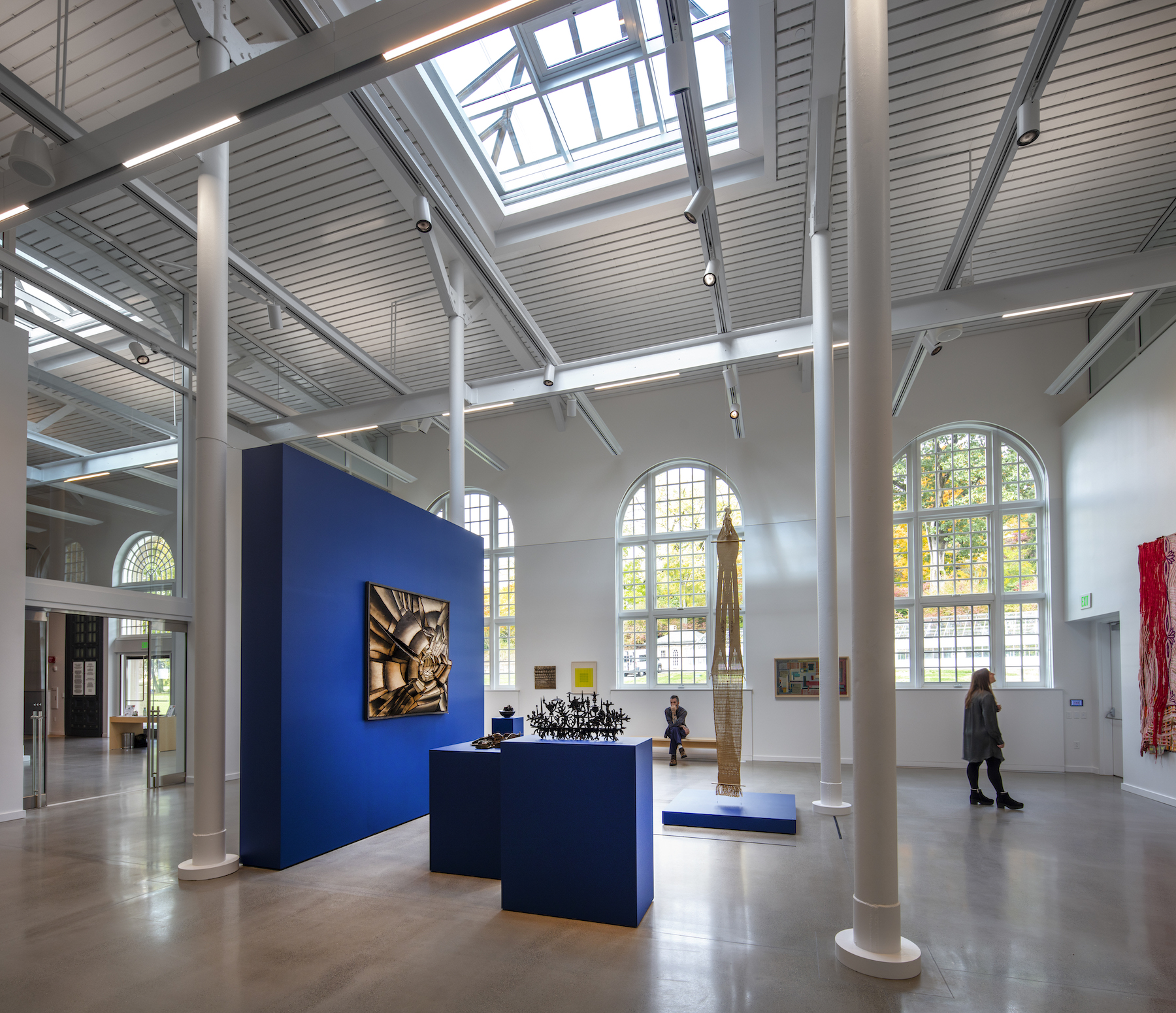
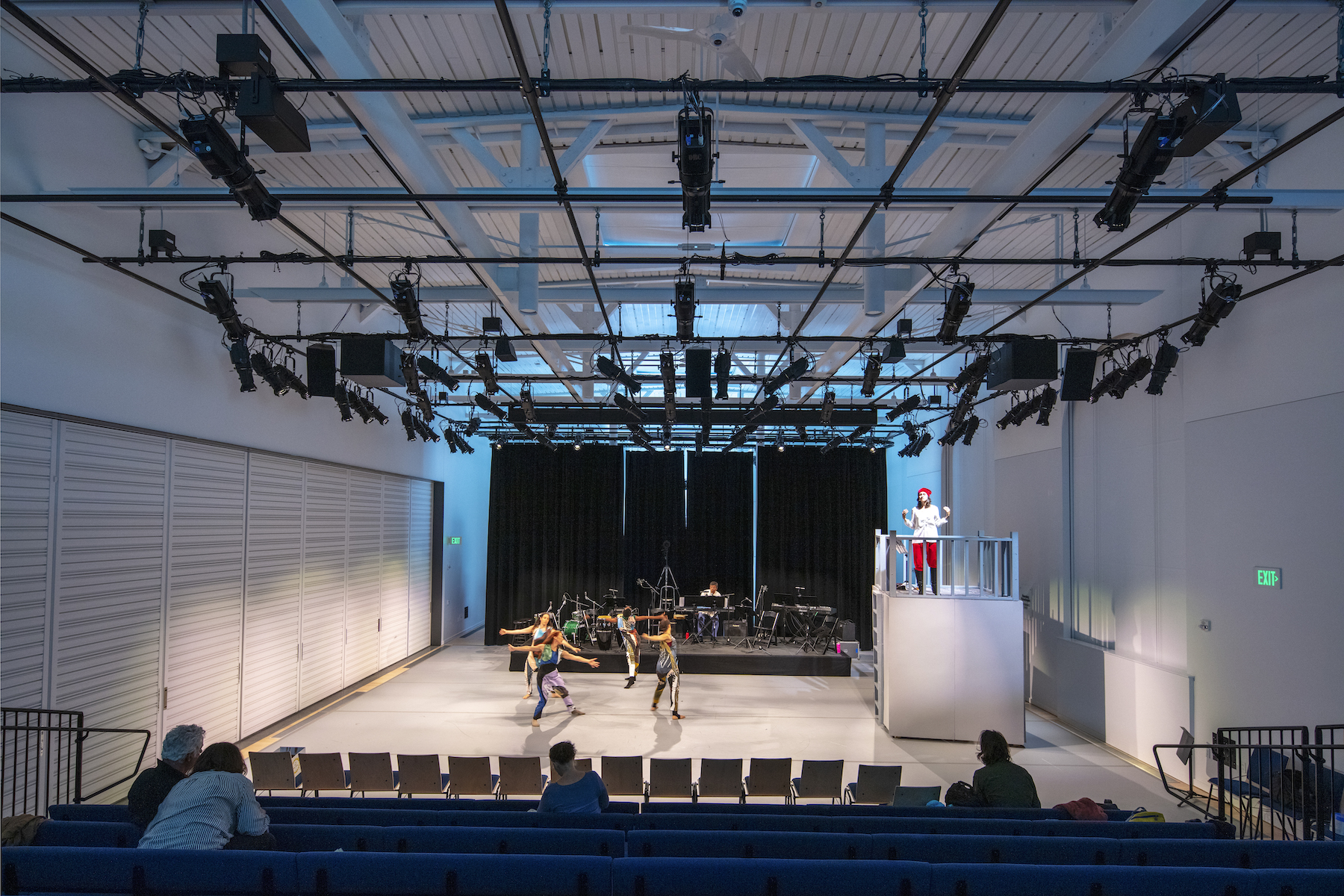
The reno added concrete slab flooring and sectioned off different areas of the building’s interior for specific performance or installation spaces. The building team added stage and rehearsal studios that can pivot 90 degrees. Also added were 40-ft-wide doors in the back of the building.
The design and construction aspired the building to achieve net-zero energy performance and LEED Platinum certification. The building’s green features include energy efficient windows, solar panels, and rainwater recapture.
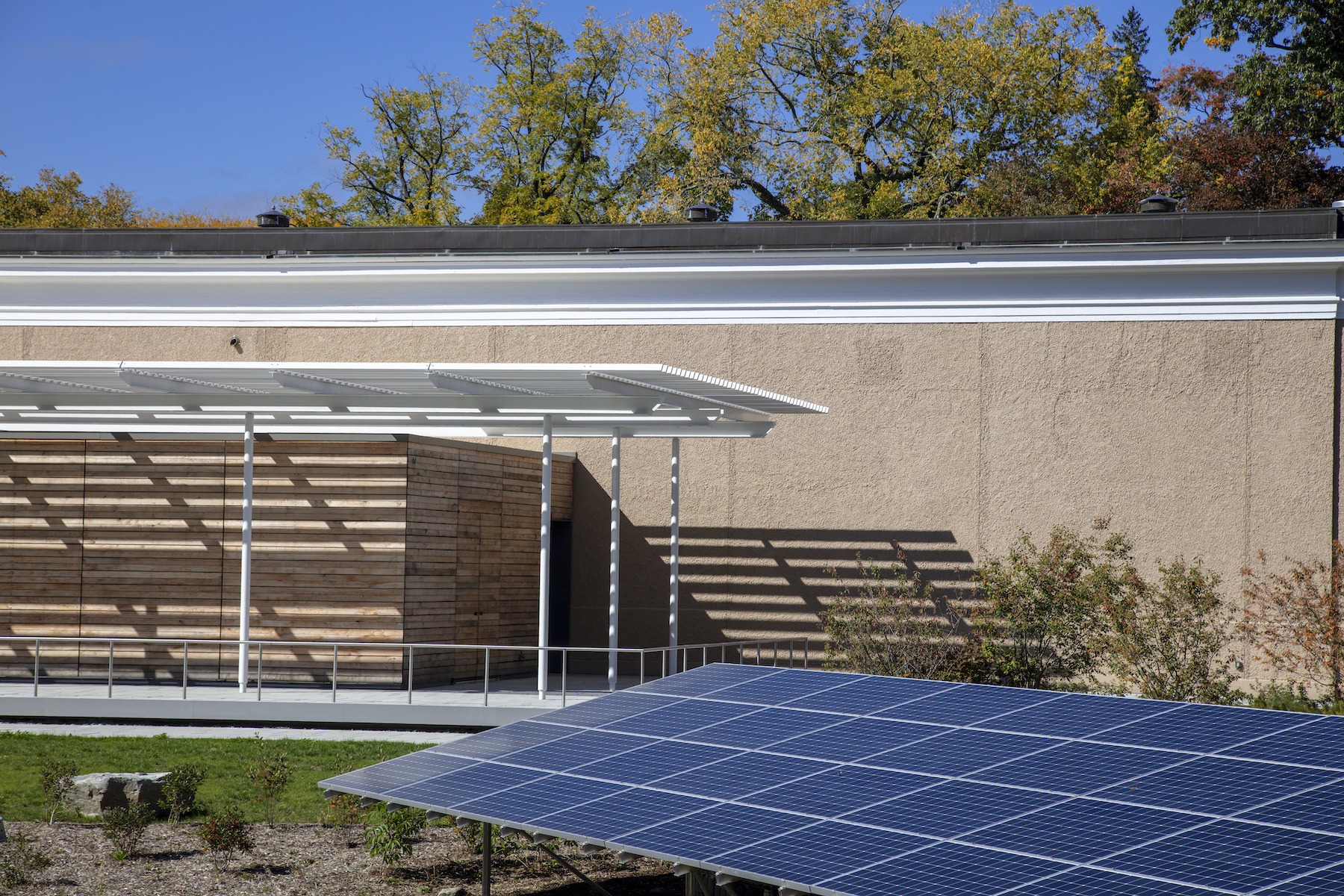
The building team on this project included York Construction Corp (CM), Silman Structural Engineers (SE), Langan Engineering (CE), Altieri Sebor Wieber (MEP/FP), and Envoie Projects (owner’s rep.).
Related Stories
| Aug 11, 2010
Giants 300 University Report
University construction spending is 13% higher than a year ago—mostly for residence halls and infrastructure on public campuses—and is expected to slip less than 5% over the next two years. However, the value of starts dropped about 10% in recent months and will not return to the 2007–08 peak for about two years.
| Aug 11, 2010
Bowing to Tradition
As the home to Harvard's Hasty Pudding Theatricals—the oldest theatrical company in the nation—12 Holyoke Street had its share of opening nights. In April 2002, however, the Faculty of Arts and Sciences decided the 1888 Georgian Revival building no longer met the needs of the company and hired Boston-based architect Leers Weinzapfel Associates to design a more contemporary facility.
| Aug 11, 2010
Team Tames Impossible Site
Rensselaer Polytechnic Institute, the nation's oldest technology university, has long prided itself on its state-of-the-art design and engineering curriculum. Several years ago, to call attention to its equally estimable media and performing arts programs, RPI commissioned British architect Sir Nicholas Grimshaw to design the Curtis R.
| Aug 11, 2010
Silver Award: Hanna Theatre, Cleveland, Ohio
Between February 1921 and November 1922 five theaters opened along a short stretch of Euclid Avenue in downtown Cleveland, all of them presenting silent movies, legitimate theater, and vaudeville. During the Great Depression, several of the theaters in the unofficial “Playhouse Square” converted to movie theaters, but they all fell into a death spiral after World War II.
| Aug 11, 2010
Biograph Theater
Located in Chicago's Lincoln Park neighborhood, Victory Gardens Theater Company has welcomed up-and-coming playwrights for 33 years. In 2004, the company expanded its campus with the purchase of the Biograph Theater for its new main stage. Built in 1914, the theater was one of the city's oldest remaining neighborhood movie houses, and it was part of Chicago's gangster lore: in 1934, John Dillin...
| Aug 11, 2010
Platinum Award: Reviving Oakland's Uptown Showstopper
The story of the Fox Oakland Theater is like that of so many movie palaces of the early 20th century. Built in 1928 based on a Middle Eastern-influenced design by architect Charles Peter Weeks and engineer William Peyton Day, the 3,400-seat cinema flourished until the mid-1960s, when the trend toward smaller multiplex theaters took its toll on the Fox Oakland.


